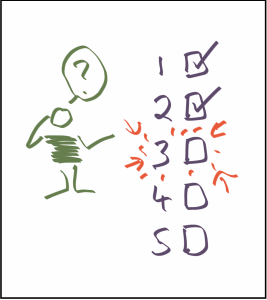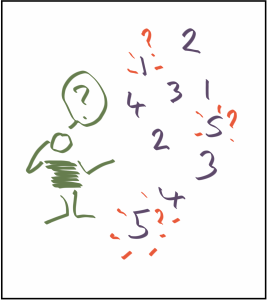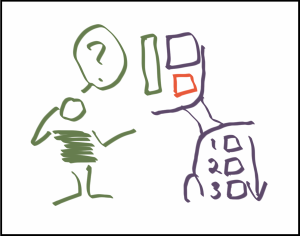How do we know when we are asking a good or a poor question? One sign of a poor question is when people are spending a lot of effort for seemingly little gain.
 ‘What should we do?’ can be both.
‘What should we do?’ can be both.
If it’s been done before and there is a predictable, best practice way to do it, then the obvious answer is ‘The next logical step.’
 However, if we are exploring complexity it can be a poor question, there are so many possible options that it can take a long time to decide what to do.
However, if we are exploring complexity it can be a poor question, there are so many possible options that it can take a long time to decide what to do.
 In order to explore something which has limited certainty, it is better to form a view or hypothesis and test it. This then creates a type of boundary around the thing we are trying to understand to help us make sense of it.
In order to explore something which has limited certainty, it is better to form a view or hypothesis and test it. This then creates a type of boundary around the thing we are trying to understand to help us make sense of it.
- Will ‘X’ happen if I do ‘Y’?
- Is it feasible to achieve ‘X’ for ‘Y’ effort?
- Will people buy our product?
For example, we often start a project by asking how much time and money it will take to make our idea a reality. This can drive a very large amount of effort to find out – when the project happens to be in the complex domain (as per the Cynefin Framework). If we change the question to ‘Is it feasible to make this idea a reality for $X and Y time-frame?’ it puts boundaries around the initial exploration stage and we can avoid large amounts of wasted and unfocussed effort. An example can be found in my previous post ‘Why do we Estimate?’
 In summary, check which type of system the question relates to according to the Cynefin Framework. Then check if the question is helping to drive useful logical work or useful exploration and if not, then change the question.
In summary, check which type of system the question relates to according to the Cynefin Framework. Then check if the question is helping to drive useful logical work or useful exploration and if not, then change the question.

